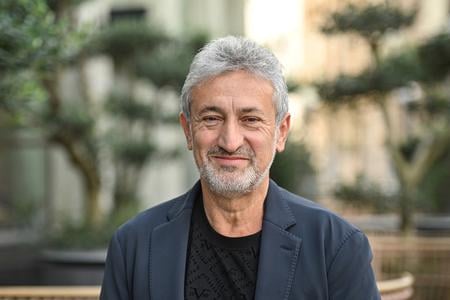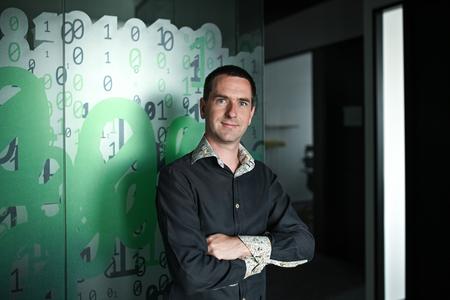Conspiracy theories, hoaxes, and disinformation pose a huge global problem. But communicating scientific facts and explanations just isn’t enough to stop people believing in them, as evidenced by the fact millions of people around the world subscribe to the disproven flat earth theory. In an interview with the Slovak Spectator, science communicator and physicist Juraj Tekel delves into this issue.
This article is supported by the ESET Foundation, whose annual ESET Science Award recognises exceptional scientists.
Meanwhile, in another interview, artificial intelligence researcher Ivan Srba discusses the huge database of fact checks he and his team have developed to help media professionals from around the world.
Other Slovak researchers have also tackled conspiracies recently, trying to understand the structural issues that can lead people to fall for them, for example.
In this overview, you will also find a selection of research conducted at universities and other institutions, including on ice caves, palaeontology and more, as well as science stories that have appeared on the Slovak Spectator website.
This overview of successes in Slovak science will be compiled regularly. To stay up to date with what scientists in Slovakia and Slovak scientists around the world are doing, subscribe to the Slovak Science newsletter, sent to readers free of charge four times a year.
Major festival coming to Bratislava
The 7th edition of the Starmus festival, an international event that combines science, art and music, will take place in the Slovak capital between May 12-17, bringing together big names from both the scientific and creative worlds to collaborate on a single vision: our planet and how best to preserve it for the future.
The event will start with a one-off Jean-Michel Jarre concert for the occasion, with special guest astrophysicist and Queen guitarist Brian May. The audio-visual spectacle will be held in the Incheba premises and is free.
Slovak and international musicians, including The Offspring, will perform in other concerts to be held throughout the festival.
As part of the festival, the Starmus Camp on the Hlavné Námestie square will be open to the general public with the aim of inspiring a new generation of scientists. Lectures and talks will be held in universities throughout the city on various topics, including a mission to Jupiter’s trojan asteroids, micropollutants and more.
You can learn more about how the festival came about in an interview with one of its co-founder, astrophysicist Garik Israelian.

Helping media professionals check facts
In recent years, disinformation has become a huge problem worldwide, but countering it is difficult. The situation in Slovakia in terms of the spread of and belief in disinformation is particularly bad.
Artificial intelligence (AI) researcher Ivan Srba and his colleagues from the Kempelen Institute of Intelligent Technologies (KInIT) are helping remedy this, creating a tool for media professionals in the hope of increasing the quality of online content and preventing the spreading of hoaxes and untruths.
They have collected what is currently the largest database of fact-checks in the world, consisting of approximately 430,000 claims that have already been checked in more than 50 languages. In addition, the researchers have created an app that "allows fact checkers to take a social media post and evaluate whether the information contained in it has already been verified somewhere, even if it is in a different language," Srba tells the Slovak Spectator.
In other words, even though an article about a global issue is in Slovak, the tool allows fact checkers to find out if anything related to the story has been verified anywhere else.

When will Slovak ice caves lose their ice?
The Dobšinská Ice Cave, located in eastern Slovakia, is the biggest of its kind in the country. It was the first cave in Europe to be lit with electricity. In 2000, it was named a UNESCO World Heritage site, and last year, National Geographic included it in its list of top 4 most beautiful ice caves to visit before their ice disappears.
Demänovská Ice Cave, located in northern Slovakia, recently lost its ice cover for the first time in 200 years. Because long cold winters are a thing of the past, so too now the ice in the cave. Other ice caves in the world are facing the same problem.
According to new research from the Slovak Academy of Science (SAV), the ice in Dobšinská Ice Cave is stable for the time being. Scientists point out that the cave has the advantage of being located in the northern part of the Slovak Paradise National Park, one of the coldest places in the country.
According to Earth Science Institute Director Ján Madarás, the ice currently has a maximum thickness of around 25 metres; the oldest ice in the cave is approximately 2,600 years old.
However, in the long-term, further ice loss seems likely with winters shorter and milder than in the past, and the number of cold days and snow cover during the season also decreasing. Learn more here and here.
Overview of other research and development activities at universities:
From expert estimates to evidence-based conservation action for the critically endangered bush-cricket; Comenius University; lead scientist Soňa Nuhlíčková. The Slovak Karst mountain range in southern Slovakia is home to the endemic Bei-Bienko’s Plump Bush-cricket, a critically endangered species, which belongs to the world natural heritage. The main goal of the project was to study the unknown ecology and biology of the cricket through exclusively evening and nocturnal activity. Read more here.
Strengthening the circadian control of vital functions as prevention for non-communicable diseases; Comenius University; lead scientist Michal Zeman. The goal of the project is to study the consequences of artificial light at night disturbing the daily rhythms of metabolic, cardiovascular, immune and behavioural parameters using a complex approach from the molecular and cellular to the systemic level. Understanding underlying mechanisms can help mitigate the effects on health of artificial light at night. The project will also study ways to strengthen weakened circadian rhythms.
Novel Green Approaches in Analysis of Proteins in Complex Biological Samples; Comenius University; lead scientist Katarína Maráková. Protein analysis in biological samples is crucial for the discovery and validation of potential biomarkers and therapeutic goals for various diseases. This makes the development of analytical methods for protein detection of key interest. In this regard, the researchers focus on developing simple, reliable and innovative pre-treatment and separation procedures.
Trypanosomatid biochemistry: an insight from neglected groups; Comenius University; lead scientist Ingrid Sveráková. The research is focused on unicellular organisms called trypanosomatids that parasitise on a wide range of hosts, primarily insects, and can infect humans, causing for example sleeping sickness, and Chagas disease. In order to develop drugs, it is necessary to understand their biochemical background. As part of their project, researchers have created the largest group of trypanosomatids studied biochemically.
Optimization procedure for improvement of transfer and safety characteristics of WET systems; Comenius University; lead scientist Erika Halašová. The project focused on the optimization of a device which represents a progressive solution for energy transfer to mobile and industrial devices by contactless energy transfer and the safety of human cells when using the device.
Unitarity, real-intermediate states, and fixed-order approach to resonant dark matter annihilation; Comenius University; lead scientist Peter Maták. There is a longer-term effort to simplify and diagrammatically represent calculations in the early universe in order to contribute to the understanding of the universe. The Slovak scientist’s paper deals with the annihilation of so-called dark matter, whose existence is assumed as the simplest explanation for cosmological observations. Read more here.
The effect of modified daytime lighting on melatonin levels under real-life conditions; Comenius University and Slovak University of Technology; lead scientist Jozef Hraška. The goal of the study was to see how short-wavelength light reduction affects the production of the hormone melatonin in an office environment and links between light from the previous day and melatonin production during the night. Read more here.
Pandemic Truths; Institute for Sociology of the Slovak Academy of Sciences (SAV). The project examines conspiracy theories in the Visegrad Group countries. One of its findings is that conspiracies related to the Covid-19 pandemic still dominate in all four countries, but that Slovaks stand out when it comes to agreeing with anti-Western conspiracies, and that they can be divided into two similarly-sized groups of resolute opponents and determined supporters. Read more here and here.
The mediating effect of institutional trust in the relationship between precarity and conspiracy beliefs; Institute of Experimental Psychology of the Centre of Social and Psychological Sciences of SAV. As part of an effort to understand why conspiracy theories take hold in a society, researchers are now trying to focus on structural problems, such as the strength of democratic institutions, inequalities, corruption etc. SAV researchers published a study focusing on experienced financial insecurity, and institutional trust. Read more here.
SAV data analysts created a model of low-carbon development; Institute of Forecasting of SAV; lead scientists Dušana Dokupilová and Martina Repíková. The goal of two studies was to propose how to set national policies and population behaviour to reduce greenhouse gas emissions. Part of the research involved developing a model in cooperation with international partners which was designed to test the effectiveness of proposed measures for energy transformation. Read more here.
An early Eocene pan-gekkotan from France could represent an extra squamate group that survived the K/Pg extinction; Comenius University; lead scientist Andrej Čerňanský. An international team that included experts from Slovakia discovered a new species of 50-million-year old gecko, suggesting that this archaic line survived the event that wiped out the dinosaurs. Read more here.
Other Slovak science stories on Spectator.sk:
ARCHAEOLOGY: During their last expedition, a Czech-Slovak archaeological team discovered a new ancient Mayan urban centre in northern Guatemala. The site, nestled within dense jungle, was previously unknown and is 3,000 years old. Maya expert and Comenius University professor Milan Kováč was part of the expedition.
SCIENCE COMMUNICATION: There is one thing that conspiracies and school trips have in common - they don't hold up, says physicist and science communicator Juraj Tekel in an interview. Tekel explains why communicating facts is not enough, and what attracts people to hoaxes and conspiracies.
MATERIAL SCIENCE: Like ceramics, glass is a ubiquitous part of everyday life. And just like ceramics, glass plays a key role in modern technology. For example, without fibre-optic cables there would be no high-speed internet. In an interview, leading glass researcher Dušan Galusek talks about the various uses of the material.
This article is supported by the ESET Foundation, whose annual ESET Science Award recognises exceptional scientists.


 Illustrative image. (source: Pixabay)
Illustrative image. (source: Pixabay)